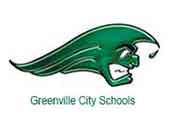|

 |
Greenville High School
The Hidden Curriculum
By Clayton Westerbeck, Assistant Principal
A School is somewhere a child can attend and learn Math, History,
Science, English, Athletics, specialized programming such as Music, Art
and other academic based entities. We can even add career-based
education to the list such as vocational learning. We have to ask, is
there something missing? Based on scores and graduation rates… numbers
that drive the funding of schools. Students struggle based on a variety
of reasons, one of the biggest is socioeconomics. Poverty levels
directly impact the standard K-12 educational end result for many
students nationwide. There must be a way to engage students and get
them to believe in themselves. I give you the “Hidden Curriculum”.
What is the Hidden Curriculum? It is the oil to the engine for
education. It is the “pleases”, the “thank you’s”, and the “good
mornings”. But it is much more than that.
When formalized education began forever ago, it was teacher centered.
This approach is simple. The teacher is in the front of the class,
there is a board, a book and paper/pencil. The teacher directs the
entire lesson. There is guided practice to some extent but the bulk of
the instruction is the teacher giving small assignments to complete.
Tasks, practice and drill. Is the academic curriculum important?
Absolutely it is! But you have to get students engaged.
Fast forward to now. The age of computers and the net. Students can get
anywhere, anytime. Sometimes, this creates roadblocks to learning such
as cell phone use in classes. Students will learn whatever they are
engaged in.
Teachers have started to create collaborative student led lessons. This
student led style of teaching engages students much better than teacher
based learning. The teacher creates and implements lessons that are
collaborative in nature such as Socratic seminars (where students
openly discuss real subject matter) or simulations. These types of
lessons are powerful because students take ownership for their
learning. They are engaged in the academic curriculum due to the
rapport and trust that was built with the educator.
Most of the research on improving academic results points to this type
of engagement that improves test scores, behavior and social
interaction. This type of approach helps to promote a positive school
culture.
According to “Wikipedia” A hidden curriculum is a “side effect of
schooling” Sometimes there are “good” side effects to things. Like a
student believing in themselves and improving their attendance because
someone (an adult or peer in the school) explained to them that school
could be the very thing that propels them to a better life. It’s these
small conversations by educators that can give students an opportunity
to realize their potential. When students are engaged by educators in
conversation on a regular basis, they learn better social skills. These
social skills allow educators to engage in more collaborative and
engaging lessons. Its trust and rapport. Everyone cares about the
students’ growth and success and most important of all, the student is
aware of this and commits to their own success.
According to The Glossary of Education Reform, “Hidden curriculum
refers to the unwritten, unofficial, and often unintended lessons,
values, and perspectives that students learn while in school”
This concept is based on how students interact while in school such as
with their peers and teachers as well as other adults. They learn what
ideas and behaviors are acceptable in society. When you have
professional educators that care, build rapport with their students,
are collaborative and pragmatic in their thinking, then learning is
maximized. Students don’t just perform better with these stronger
social skills and values, they perform better overall. This is where
education builds good people.
The side effect is that students will be better prepared to be positive
members of society and reach their potential as human beings. Those are
side effects I can live with.
|
|
|
|

